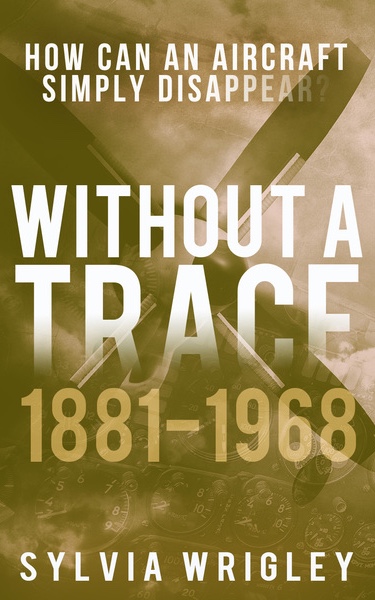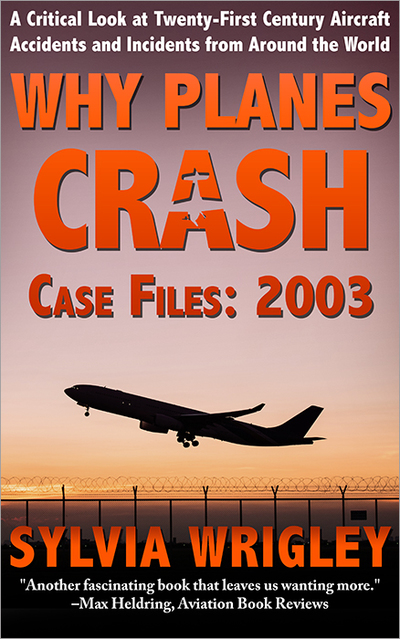Azerbaijan Airlines flight 8243: Shot Down Over Grozny
On the 25th of December 2024, Azerbaijan Airlines flight 8243, a scheduled passenger flight from Baku, Azerbaijan to Grozny, Russia, crashed on approach to Aktau International Airport in Kazakhstan with 62 passengers and five crew on board.

The Embraer 190AR, registration 4K-AZ65, took off from Heydar Aliyev International Airport in Baku at 07:55 local time for what should have been a routine one-hour flight. The 11-year-old aircraft had undergone its last maintenance check on October 18th.
As the aircraft entered Russian airspace, the crew reported losing GPS navigational aids. The aircraft’s ADS-B signal also disappeared from tracking services. This strongly indicated GPS jamming, a tactic frequently used by Russian forces to counter Ukrainian drone operations despite being prohibited under international regulations.
The flight crew requested an NDB approach to Grozny and were cleared for approach to runway 26. However, the flight crew were unable to land due to the thick fog. After two failed attempts, the flight crew opted instead to return to Baku.
As the flight departed Grozny, something went terribly wrong.
According to an unverified transcript posted on PPRuNe, which was translated from a document shared on a Russian Telegram channel. This picks up after the two balked approaches at Grozny.
Azerbaijan Airlines flight 8243: AXY8243 proceeding to Baku.
Grozny Tower Controller: AXY8243, with current heading, climb to 900 m.
Flight 8243: With current heading, climb to 900 m.
Controller: Confirm, are you diverting to Baku as an alternate?
Flight 8243: Confirm, we’re leaving for Baku.
Flight 8243: Both GPS’s are lost, we need vectoring.
Controller: Got it, right course 360.
Flight 8243: Right course 360. Thank you.
Controller: AXY8243 dial FL150 and increase climb.
Flight 8243: Increasing climb.
Your friendly reminder that Russia works in metres. Flight Level 150 is 15,000 metres, around 50,000 feet, so I’m wondering if someone translated the flight levels, as that seems like a big jump in clearance from 800 metres (3,000 feet).
They had just started climbing when something drastic happened.
Flight 8243: Our controls have failed, bird strike in the cabin. Bird strike in the cabin (unintelligible)
Controller: Got it, what kind of assistance do you need?
Some passengers who survived the crash later told the media that they’d heard multiple explosions and seen shrapnel. The flight crew obviously did not have this information but here is a video reportedly taken from the cabin.
Going back to the unverified transcript, communications were bad and a confused exchange. The crew repeatedly asked for weather at Mineralnye Vody.
Flight 8243: All right, proceeding to Mineralnye Vody.
Controller: Copy, proceed on current heading until command.
Flight 8243: Understood, proceed on current heading until command. Please, request weather Mineralnye Vody.
Controller: AXY8243 hold, climb to FL150
Flight 8243: Climbing to FL150
Controller: Execute left orbit.
Flight 8243: Cannot execute, control is lost. Give us vectoring to Mineralnye Vody, and please give us weather Mineralnye Vody.
But the situation in the aircraft was clearly getting worse.
Flight 8243: Left 360, my airplane is losing control.
Controller: AXY8243 for information weather Min-Vody: wind 120g, 6 m/s, visibility over 10 km, solid cloud cover base 180m, QNH1024hPa, band 11 in operation
According to this transcript, the weather at Mineralnye Vody was not that bad: light wind and overcast at 600 feet with 10km visibility. However, the METAR weather reports from Grozny tell a different story.
URMG 250530Z 16001MPS 3500 BR OVC012 03/02 Q1025 R26/290250 NOSIG RMK OBST OBSC QFE754/1005=
URMG 250528Z 00000MPS 3500 BR OVC012 03/02 Q1025 R26/290250 NOSIG RMK QFE754/1005=
URMG 250502Z 24001MPS 3500 BR OVC008 03/02 Q1025 R26/290250 NOSIG RMK MT OBSC OBST OBSC QFE754/1005=
URMG 250500Z 24001MPS 3500 BR OVC014 03/02 Q1025 R26/290250 NOSIG RMK QFE754/1005=
These show visibility consistently at 3500 metres in mist with a cloud ceiling at 240-420 feet, which more clearly justifies the crew’s decision to seek an alternate.
Flight 8243: Give us Makhachkala.
Controller: AXY8243 decided to proceed to Makhachkala?
Flight 8243: Yes sir, give me the weather forecast for Makhachkala.
About a minute later:
Flight 8243: Now the hydraulics have failed
The weather at Makhachkala was no better regardless of which source we use: a cloud ceiling of 750 feet with visibility down to 3,300 metres in haze. However, at this point, communications broke down again with multiple unintelligible broadcasts.
The controller asked if the aircraft was OK, explaining that they were not appearing on his monitor.
Flight 8243: Our altitude is 80
Controller: Try to reach FL100
Flight 8243: If we can.
At this point, the controller asked the flight crew to change frequency to Rostov Control. The crew confirmed that they were changing to Rostov, and the transcript ends.
Again, the above transcript is unverified, but it fits the general details released so far: the aircraft had diverted due to weather and initially planned to return to Baku. As they were departing Grozny, they suffered damage which led to control issues but the bad weather and fog meant that they were unable to divert to Mineralnye Vody or Makhachkala for an emergency landing.
At some point, they clearly decided to divert to Aktau International Airport in Kazakhstan. There are various rumours that the aircraft had been told to proceed to Aktau or even that the flight had been instructed to fly to the Caspian Sea in order to ditch the aircraft.
As of right now, we don’t have enough solid information to recreate the decision process but there’s no question that flight 8243 ended up inbound to Aktau.
The Embraer reappeared on tracking services while flying over the Caspian Sea. The ADSB information shows extreme variations in altitudes and speeds, suggesting significant control difficulties, however, it isn’t clear how reliable this data is under the circumstances.
Flight Radar 24 have posted the full data and attempted to recreate the flight details using reverse dead reckoning.
While data was not received for the entire flight, the ADS-B data available from 05:13 UTC demonstrates variable altitude (feet AMSL) reports of ±8,000 feet dozens of times and oscillating ground speed (Knots) and vertical rate (feet per minute) values. The aircraft was unable to maintain consistent altitude and speed for at least 75 minutes. Photos and video from the crash scene indicate puncture damage to at least the left side of the vertical stabiliser.
As they came into Aktau, they were unable to stabilise the approach and had to go around. A second attempt also failed. As they turned to make a third approach to the airport, communications were lost.
The aircraft continued to circle but two minutes after the radio communication failure, Azerbaijan Airlines flight 8243 crashed into the ground, three kilometres out from the airport.
Thirty-eight people died in the crash, including both pilots and one cabin crew member. The following video by bystanders on the ground shows the struggle to maintain the aircraft and then the crash. Be warned, the footage is disturbing to watch.
Analysis of the wreckage clearly showed that the pre-impact damage to the aircraft matched the pattern of a surface-to-air missile, which they believe struck the aircraft at 2,400 metres (~8,000 feet) over the Naursky District, about 18 km north-northwest of Grozny airport.
President Ilham Aliyev of Azerbaijan stated to the media almost immediately that the aircraft had been unintentionally shot down by Russian forces. A few days later, Russian President Vladimir Putin explained that the loss was a “tragic incident”, explaining that Ukrainian drones were attacking Grozny, which led to the activation of air defense systems. He offered an apology for the fact that the incident took place in Russian airspace.
The head of Rosaviatsiya, Russia’s federal agency for air transport, has stated that a closed-skies protocol “Kovyor” had been imposed as a result of the Ukrainian attack. No times were given for the closure nor any comment on the fact that the flight crew clearly did not know that the airspace was closed. The unofficial transcript also has no reference to the controller referring to closed airspace or NOTAMs for the area. This will hopefully be elaborated on as a part of the investigation.
The Russian spokespeople stopped short of stating directly that the civilian airliner had been shot down. Azerbaijan Airlines has suspended multiple routes to Russia citing security concerns.

The investigation will be led by Kazakhstan as the state where the crash occurred, in line with ICAO Annex 13, along with Azerbaijan (state of registry and operator) and Brazil (state of design/manufacture of the Embraer) as participants. Countries running an investigation who do not have the dedicated technical resources required typically ask for technical support from another country, most commonly the NTSB in the United States, the BEA in France or the IAC in Russia. However, Kazakhstan has specifically stated that Russian investigators will be excluded from the forensic investigation. Instead, the data recorders will be sent to Brazil for analysis by CENIPA. Turkey, invited by Azerbaijan, has dispatched eight investigators to assist the investigation.
This is the third civilian aircraft shot down in connection with armed conflict in the last ten years. The first was Malaysia Airlines flight 17, brought down over eastern Ukraine by a Russian Buk surface-to-air missile, killing all 298 people aboard. The second was Ukraine International Airlines flight 752 in 2020, when Iranian forces mistook the passenger jet for a cruise missile during heightened tensions with the United States, resulting in 176 fatalities. In both previous cases, initial denials were followed by eventual admissions of responsibility.
According to the Wall Street Journal, missiles have become the leading cause of airline passenger deaths in modern times — a chilling situation for aviation safety.









Thanks for the detailed report Sylvia. Sadly we are just into 2025 and this crash is just one of a few that have occurred so far, Chris
According to some quick search results Russia now (since 2011) uses feet when above the transition altitude so that FL150 is actually 15’000 feet (and feet below the transition level at at least some airports):
https://skybrary.aero/articles/metric-altitude-reference
https://en.wikipedia.org/wiki/Flight_level#Flight_levels_in_Russian_Federation_and_North_Korea
Oh! That makes so much more sense! Thank you and noted!
I wrote on this elsewhere.
One of the sources is a leaked radio communications transcript (via VChK-OGPU) which feels genuine. That source is usually trustworthy.
• Azerbaijan Airlines Embraer ERJ-190, registration 4K-AZ65, was performing flight J2-8243 from Baku (Azerbaijan) to Grozny (Russia).
• They had planned on a GPS-guided instrument landing at Grozny.
• A localizer landing was impossible because the ILS had been removed months prior. This was presumably due to the runway getting an extension (works are ongoing).
• There was GPS interference/spoofing in the Grozny area, and it affected that flight.
• The pilots tried a direct (NDV) approach with help from ATC, but rejected the landing twice. This is aviation lingo for “the pilots did not want to land because they felt it might not go well”. It does not mean that Grozny tower refused them permission.
• The pilots decide to return to Baku.
• While maneuvering at 8000 ft, the aircraft suffered a malfunction. The pilots attributed this to a bird strike. From the cockpit, they would not have seen the damage directly. For comparison:
Source: https://www.pprune.org/accidents-close-calls/663269-azerbaijan-airlines-down-near-aktau-airport.html#post11795333
• It is reported, and confirmed by Putin, that Ukraine flew 3 drones into Chechnya, and Russian anti-aircraft batteries fired on them.
• Russia closed parts of its airspace 5 minutes after J2-8243 was hit (“Carpet”).
• With the malfunction, the pilots could not possibly land in Grozny. Again, a pilot’s view (FullMetalJackass on pprune):
• Because the aircraft is crippled, the aircraft crashes during the second landing attempt. The pilots’ decisions did save some of the passengers and crew. The pilots are heroes for not losing hope, and achieving what they did.
• The aircraft was built in Brazil, and Brazil’s CENIPA is going to analyse the flight data recorder (FDR) and cockpit voice recorder (CVR) that were recovered from the aircraft. They hold important clues to what exactly happened on this flight.
(De-)Bunk:
• The aircraft did not carry a passenger oxygen tank, thus it could not have exploded. The passenger oxygen generators are solid-state chemicals.
• There is no evidence that Russia did not permit the aircraft to land. It is unclear whether they would have permitted an emergency landing after the airspace was closed, but it is also reasonable to assume the pilots did not ask for one.
• There is no evidence that Russian ATC ordered the flight to ditch the aircraft in the sea. Clearly, the pilots were not forced to do that; it remained their decision, and while it looks like they considered it near the Kazakh shore, they ultimately preferred to attempt a solid ground landing.
• The aircraft was hit by what looks like anti-air weaponry near Grosny, and that caused the loss of all hydraulic systems, crippling the aircraft. The pilots themselves mistakenly identified and reported this as bird strike initially.
tl;dr
1) Russia shot at flight J2-8243, and caused it to be unable to land.
2) Russia was late in acknowledging this (later than Iran in 2020).
3) There is no evidence that Russia took steps to cover up the incident.
This is great! I didn’t have time to even explore the rumours, let alone debunk them. This deserves a post of its own, really. I did see the references to not having permission to land, which was clearly nuts. Some of the transcript is a bit odd and the weather doesn’t match, but I agree with you that it seems much more feasible than some of the reports.
Thank you!
I don’t really have more information than you do (well, I did see 6 pages of transcript published by VChK-OGPU, and their report on the belated airspace closure), but it’s still true that “as of right now, we don’t have enough solid information to recreate the decision process”. Given that the CVR is in good hands, that’s going to change.
What we do have is enough information to put together a plausible version of events that does not require imputing malice. And we do know that whoever is proposing these malicious rumors does not have any more information than we do, so I can confidently say “there is no evidence for that claim” and put the ball back in their court.
And in many cases, we even have plausible explanations of how the false information entered the public discourse.
It’s plausible that the pilots thought of the event as a bird strike (at least at first), and referred to it as such over the radio, as the leaked transcript suggests.
It’s plausible that a pilot told the cabin crew, “we may be forced to ditch; prepare the passengers”, and someone understood this as “Russia forces the aircraft to ditch”.
It’s plausible that someone unfamiliar with aviation lingo heard “they rejected a landing at Grozny” and thought “they” referred to the Russians and not the pilots.
It’s plausible that non-pilots do not understand that Aktau may have been preferable to the pilots because of the weather and lack of mountains, and thus want to attribute a malicious influence to the pilots deciding to land there.
It’s good to think about what’s plausible, given the evidence we know.
It’s good not to trust claims that come without evidence. Even if you want to believe it, it may not be true. Facts need to be based on evidence, not beliefs.
Sylvia wrote:
This is true when considering passenger flights. https://en.m.wikipedia.org/wiki/List_of_airliner_shootdown_incidents shows two cargo aircraft shot down in that time frame:
• On 4 May 2020, an East African Express Airways Embraer EMB 120 Brasilia on an air charter flight carrying pandemic relief supplies crashed on approach to an airstrip in Berdale, Somalia, after being fired upon by Ethiopian Ground Forces.
• On 21 October 2024, a Ilyushin Il-76T possibly owned by New Way Cargo Airlines was shot down by the Rapid Support Forces, while flying over the region of Darfur, Sudan.
There’s some discussion on whether the Ilyushin was on a military mission, but the Embraer was not.
When I look at that list, I get the impression that 5 incidents in 10 years is not at all unusual, unfortunately.
Fair point, I should have said passenger airliners not civilian aircraft. I was really tempted to dig deeper into the stats (still am); how much of the cause-of-death situation is connected to aviation becoming safer?
It’s worth commenting that the damage does not look like a surface-to-air missile strike. These things cause catastrophic damage (think MH17, IR655) especially to a slow and lumbering airliner. That said there does appear to be minor shrapnel damage. As to what caused this damage (drone explosion, flak), I am not sure anyone has the answer yet. Whether this damage actually brought the aircraft down is also in question. Lesson of the day is never to fly commercial airlines near active war zones. A tragedy, none-the-less.
Many others have commented that it does look like an anti-air strike. Please consider that there are different anti-air systems (Pantsir would be different from BUK, for example), and the effect is different depending on what exactly is damaged. For example, PS752 is reported to have still been flyable after the first missile strike.
Most importantly, there is no other plausible explanation for the damage found on the aircraft.
The “lesson of the day” is to close an airspace when a state intends to fire live anti-air ordnance into it. Ukraine has responsibly closed its airspace when the invasion started, and had closed the airspace above Donbass at the time of the MH17 disaster for the altitudes that the anti-air systems the enemy was known to have could reach. When Russia deploys anti-air systems with rules of engagement that allow them to fire at unidentified targets, then Russia needs to close the affected airspace in advance. They did not do that at Grozny until it was too late.
Another interesting thing here is the Kazakh decision not to involve Russia. Kazakhstan, like many of the SSRs, had a brief period of independence before the Soviets took over, and was then very much dominated. When Russia asked them to contribute to the invasion of Ukraine, they declined and instead invited US military advisors in; now they are again not asking for Russian assistance.
ICAO Annex 13 governs the international aspects of accident investigations. When an air accident (e.g. a crash) occurs in Kazakhstan, Kazakhstan leads the investigation, and the states of the manufacturer, the operator, and the state of registry all have standing to participate in the investigation, since they all could end up taking the blame. The jet was made in Brasil, so CENIPA is already involved. Any of the aforementioned states could have protested handing evidence to Russia, so it may not have been Kazakhstan who prevented Russia’s involvement.
ICAO Annex 13 paragraph 5.15 mandates Russia to supply all relevant infirmation it has, as the aircraft used Russia’s facilities prior to the crash. That is why the leaked (and translated!) transcript from Grozny ATC exists.
Now, clearly, Russia is going to end up getting blamed, so it would make sense for them to be represented in the investigation. I think Russia should declare an accident by admitting the aircraft was attacked and crippled on their territory. This would be a separate accident from the crash landing. And then they could request that these investigations be merged. But to allow Russia the benefit of access without admitting their role in the accident makes no sense politically.
I’ve been to Kazakhstan some years ago and relatives lived there; certainly at that time, the Russians would have been involved in the investigation already, regardless of how odd the look was. Merely commenting that things have changed